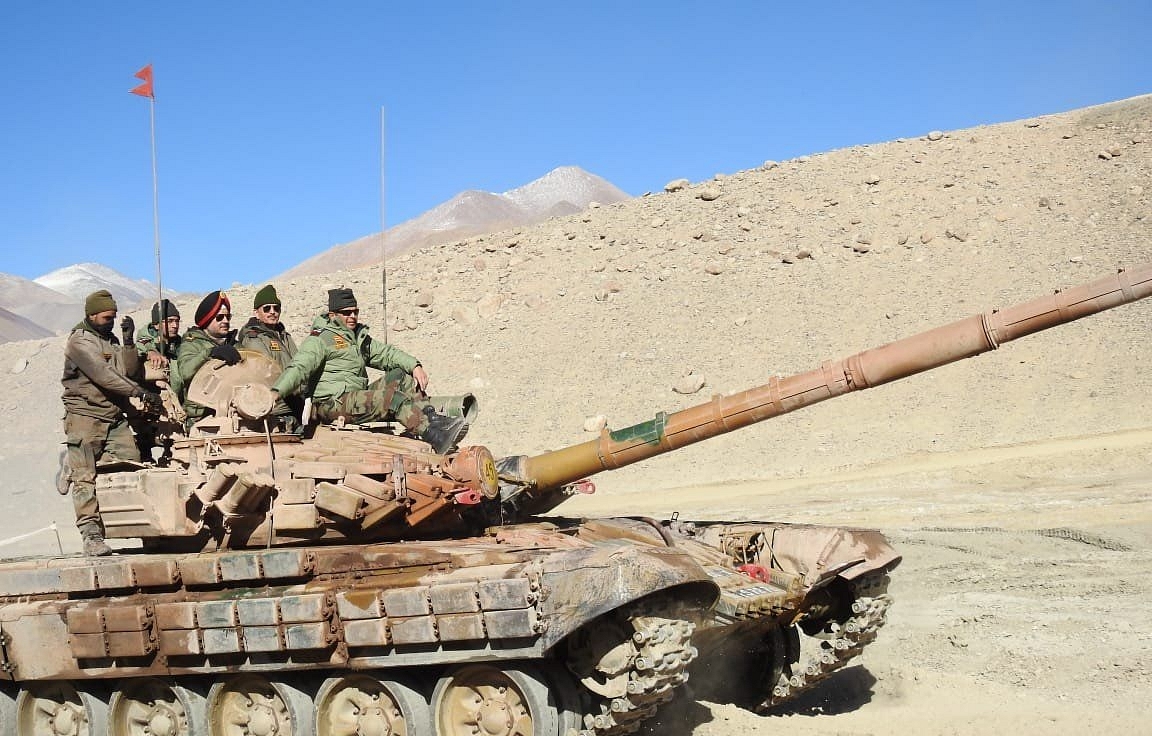News Brief
Explained: India's New LAC Engagement Rules Which Give Army Commanders Full Freedom To Counter China

Representative Image - Lieutenant General Ranbir Singh, Former Chief of Army’s Northern Command, on a tank in Ladakh. (Northern Command Indian Army/Twitter)
India has changed rules of engagement at LAC after the Galwan Valley clash and given Army commanders full freedom to put in use any instrument under his command for tactical operations as deemed fit in the situation, reports The Print.
India has informed China about the changed rules both at military and diplomatic levels.
“The rules of engagement have changed. The Army commander on the ground will decide on the tactics to be used to counter any kind of aggression. There is nothing now that binds the commander from taking certain kinds of tactical decisions,” The Print quoted a source as saying.
“The Chinese have been told both at diplomatic and military levels that rules of engagement have changed. India will counter forcefully any kind of misstep or violence by China,” said another source.
Use of firearms
Both the 1996 and 2005 agreements between India and China ban the use of firearms in face-offs at the border.
Article 6 of the 1996 agreement says that “neither side shall open fire or conduct blast operations within 2 km of the Line of Actual Control”. Therefore, the practice on ground was that not all carried loaded firearms while on patrol.
This doesn’t mean that the soldiers remain unarmed. All troops on border duty always carry arms, especially when leaving post, informed external affairs minister S Jaishankar.
The soldiers involved in the 15 June clash with Chinese troops were also carrying firearms. They did not open fire as they were following border agreements between the two countries, the government said on Thursday.
The Galwan valley clash on Monday (15 June) evening was carried out without firearms, and involved rods and wooden spikes with nails on them, stonepelting and physical clashes.
Reportedly, after the 5 May clash at the Pangong Tso lake, the soldiers posted there were supplied with light anti-riot gear, including body armours, shields and fibre lathis.
Under the new Rules of Engagement, the restrictions on the use of firearms won’t apply on the commanders who will have full authority to respond to “extraordinary situations” using all resources at their disposal.
“With the changes in the ROE, there’s nothing that limits the ability of Indian commanders to take whatever action they deem necessary on the LAC. ROE have been amended to address the brutal tactics being employed by Chinese troops,” HT quoted an official as saying.
“Two violent clashes took place in Pangong Tso (5-6May) and Galwan Valley (around mid-May) before the 15 June skirmish in eastern Ladakh. On all occasions, they came in huge numbers and assaulted our troops with iron roads and nail-studded clubs. Our troops fought back fearlessly but the ROE had to be revisited,” he said.
Top retired commanders India-China relations observers called the clashes "not classical face-offs between rival troops but were extremely violent attacks on Indian soldiers”.
Support Swarajya's 50 Ground Reports Project & Sponsor A Story
Every general election Swarajya does a 50 ground reports project.
Aimed only at serious readers and those who appreciate the nuances of political undercurrents, the project provides a sense of India's electoral landscape. As you know, these reports are produced after considerable investment of travel, time and effort on the ground.
This time too we've kicked off the project in style and have covered over 30 constituencies already. If you're someone who appreciates such work and have enjoyed our coverage please consider sponsoring a ground report for just Rs 2999 to Rs 19,999 - it goes a long way in helping us produce more quality reportage.
You can also back this project by becoming a subscriber for as little as Rs 999 - so do click on this links and choose a plan that suits you and back us.
Click below to contribute.
Latest